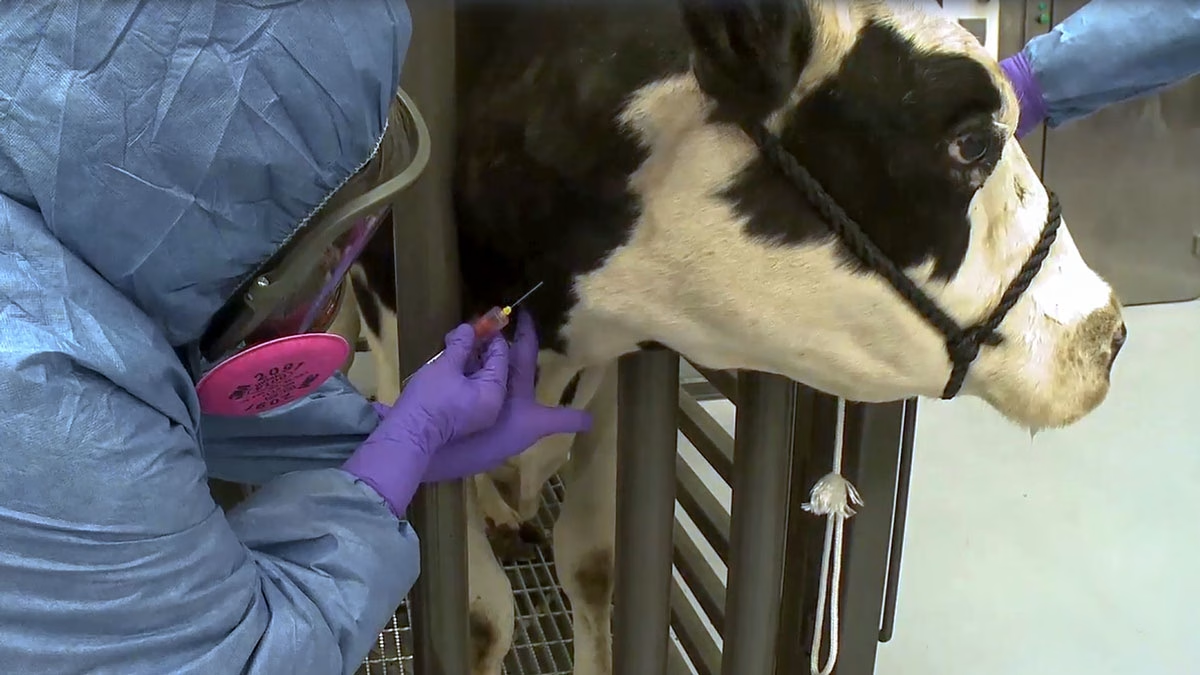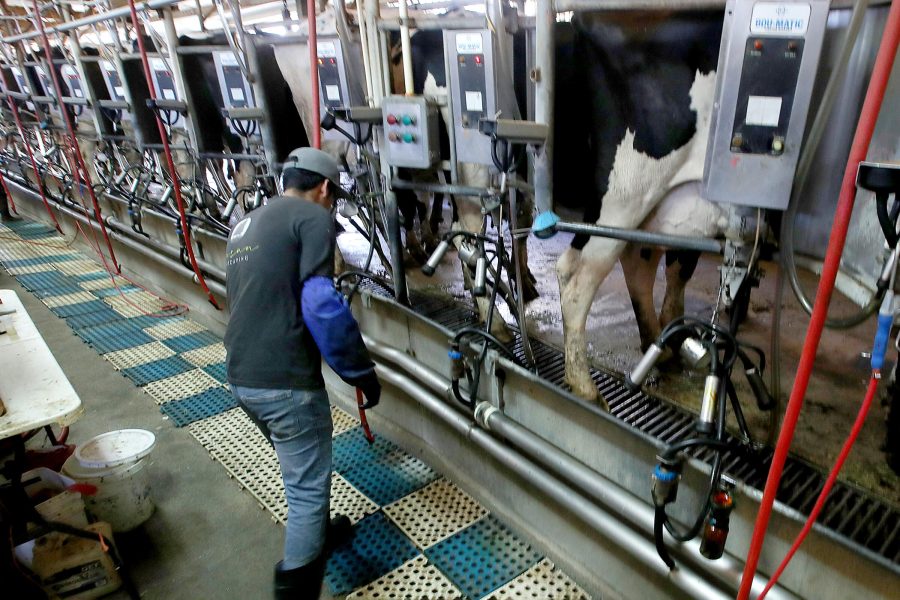Learn how US scientists are infecting cattle with bird flu in secure labs to study the virus. Find out what this means for health and farming.

Imagine a virus that leaps from birds to cows and potentially to humans, causing chaos on farms and raising severe public health concerns. This is an urgent situation in the United States. Scientists are swiftly preparing to introduce avian influenza into dairy cows in high-security labs. Why? Because the data we have now is patchy, and we need a more precise understanding. This research is not just crucial, it’s time-sensitive. With bird flu spreading across multiple states, it’s essential to determine its full impact and develop effective control measures. These lab experiments with cattle will offer vital insights that field studies alone can’t provide. Stay tuned as we dive into the science behind stopping this alarming outbreak and its potential public health implications.
The H5N1 Virus: A Global Health Challenge
The H5N1 virus, or bird flu, emerged in 1996 in China and is now a significant public health concern. It mainly affects birds, causing outbreaks in poultry and wild birds across multiple continents. H5N1 spreads through direct contact with infected birds or contaminated environments. Interestingly, the virus can cross species, infecting animals like cats, dogs, and swine.
The virus severely impacts birds, often leading to high mortality rates and symptoms like sudden death and respiratory distress. In humans, it can cause severe respiratory illness with symptoms ranging from fever and cough to pneumonia and acute respiratory distress syndrome (ARDS). The high mortality rate in humans makes it a significant health threat.
Past outbreaks, like the 2003–2004 event in Asia, resulted in the culling of millions of birds and high human fatality rates. This shows the virus’s devastating potential. Despite efforts to control it, H5N1 remains a threat, requiring constant vigilance and research.
Understanding the virus’s origins, transmission, and effects on different species is critical to developing prevention and control strategies. Scientists, including Alexis Thompson, Ph.D., and Yoshihiro Kawaoka, Ph.D., play crucial roles in researching the virus and developing vaccines and treatments.
Pioneering Research to Combat Avian Influenza in Cattle
This research aims to infect cattle with avian influenza in high-security labs to understand better the virus’s threat to livestock and humans. US scientists and international labs aim to collect comprehensive data in controlled settings. This study addresses the limited data from farms. By collaborating with experts like Diego Diel from Cornell University and Martin Beer from the Federal Research Institute for Animal Health in Germany, researchers hope to gain critical insights into the virus.
Data Collection: A Crucial Yet Challenging Process
Managing avian influenza outbreaks is urgent, but collecting reliable data from US farms takes much work. The data flow is limited as public health officials sort out their roles, and some farms resist oversight. This resistance often stems from fears of economic impacts and regulatory scrutiny.
Richard Webby, an avian influenza researcher at St. Jude Children’s Research Hospital, points out the difficulty in obtaining the right sample sets from these farms. Without proper samples, researchers can’t fully understand the virus’s transmission and impact, making it hard to create effective prevention and control measures.
Overcoming these barriers is crucial. Accurate data allows scientists to inform policies and develop strategies to protect animal and human health. Cooperation between farms and health officials is vital for enhanced data collection and gaining a complete picture of the virus’s behavior.
Expert Consensus: The Critical Role of Controlled Laboratory Studies
Experts agree that controlled lab studies are essential for understanding the H5N1 virus. Richard Webby from St. Jude Children’s Research Hospital highlights the challenge: “It’s tough to get the right sample sets off the infected farms. … That’s why this experimental infection of cows will be super informative.”
Dr. Alexis Thompson, Ph.D., states, “Field data can be incomplete or inconsistent. Lab-controlled infections allow us to observe the virus under controlled, replicable conditions. This fills in the gaps left by field studies.”
Dr. Lavanya Babujee, Ph.D., adds, “In controlled environments, we can monitor the virus’s progression minute by minute. This level of detail is unattainable in field studies.” Such studies help develop targeted vaccines and treatments.
Broader Implications for Public and Animal Health
The implications for public health are substantial. Controlled lab studies aim to reveal how the H5N1 virus impacts cattle, helping develop better vaccines and treatments for livestock and humans. This could stabilize the dairy and meat industries, easing economic pressures and ensuring a more reliable food supply.
For human health, understanding the virus’s behavior in cattle can shed light on cross-species transmission, crucial for preventing human outbreaks and reducing pandemic risks. These insights could also enhance farm biosecurity and improve surveillance systems, building a more robust public health infrastructure for avian influenza outbreaks.
The Bottom Line
US scientists are taking bold steps to combat influenza by infecting cattle with the virus in high-security labs. This research aims to understand the dangers of avian flu, which has alarmed the United States with its spread to dairy cows. Collaboration is critical, with experts like Cornell University’s Diego Diel and Germany’s Martin Beer working together. This research will not only help understand avian influenza in cattle but also enhance public and animal health by informing vaccine development and control measures. The potential benefits of this research are immense, offering hope for a future with better prevention and control measures. The urgency and value of this research cannot be overstated. Stay informed and support scientific efforts to mitigate this health concern.
Key Takeaways:
- Scientists are set to infect cattle with the H5N1 avian influenza virus in high-security labs.
- The research aims to gain a deeper understanding of the virus’s threat to both cattle and humans.
- Samples are being transported to Germany’s Federal Research Institute for Animal Health.
- Veterinarian Martin Beer will lead the experiments to gather more comprehensive data.
- Field data has been limited, highlighting the need for these controlled laboratory studies.
- Experts believe that these experiments will provide valuable insights to combat the virus effectively.
Summary:
The H5N1 virus, also known as bird flu, is a global health concern causing chaos on farms and raising public health concerns in the United States. Scientists are preparing to introduce avian influenza into dairy cows in high-security labs to understand its threat to livestock and humans. The virus, which emerged in 1996 in China, mainly affects birds and can cross species, infecting animals like cats, dogs, and swine. It can cause severe respiratory illness in humans, leading to fever, cough, pneumonia, and acute respiratory distress syndrome (ARDS). Past outbreaks, such as the 2003-2004 event in Asia, resulted in the culling of millions of birds and high human fatality rates. Scientists like Alexis Thompson and Yoshihiro Kawaoka play crucial roles in researching the virus and developing vaccines and treatments. Controlled lab studies are essential for understanding the H5N1 virus, developing better vaccines and treatments, stabilizing the dairy and meat industries, easing economic pressures, and ensuring a more reliable food supply.












